
The Enigmatic Skeleton Coast of Namibia
Discover the enigmatic Skeleton Coast in Namibia, where shipwrecks, sand dunes, and wildlife create a unique and hauntingly beautiful landscape.
The Skeleton Coast in Namibia is a place of raw beauty and mystery. Stretching over 500 kilometers along the Atlantic Ocean, this remote coastal area is known for its treacherous fogs, shipwreck remains, and desolate landscapes. It has earned its name from the numerous whale bones and shipwrecks scattered along its shores. Visitors to the Skeleton Coast can witness a unique blend of desert and ocean. The coastline is lined with towering sand dunes, some of which plunge directly into the sea. The stark contrast between the golden sands and the deep blue waters is truly breathtaking. The area is also home to a variety of wildlife including seals, jackals, and even desert-adapted elephants. Adventure seekers will find the Skeleton Coast to be a paradise. Activities such as 4x4 driving, sandboarding, and guided tours offer a closer look at this rugged environment. The Skeleton Coast National Park provides a protected area where visitors can explore the natural beauty and learn about the region's history. The park is also a great place to spot unique flora and fauna adapted to this harsh environment.
Local tips in Skeleton Coast
- Visit during the cooler months from May to September for more comfortable temperatures.
- A 4x4 vehicle is recommended for navigating the rough terrain of the Skeleton Coast.
- Book guided tours in advance to ensure availability and gain deeper insights into the region.
- Carry enough water and supplies as facilities are sparse in this remote area.
- Respect the local wildlife and keep a safe distance to avoid disturbing their natural habitat.
The Enigmatic Skeleton Coast of Namibia
The Skeleton Coast in Namibia is a place of raw beauty and mystery. Stretching over 500 kilometers along the Atlantic Ocean, this remote coastal area is known for its treacherous fogs, shipwreck remains, and desolate landscapes. It has earned its name from the numerous whale bones and shipwrecks scattered along its shores. Visitors to the Skeleton Coast can witness a unique blend of desert and ocean. The coastline is lined with towering sand dunes, some of which plunge directly into the sea. The stark contrast between the golden sands and the deep blue waters is truly breathtaking. The area is also home to a variety of wildlife including seals, jackals, and even desert-adapted elephants. Adventure seekers will find the Skeleton Coast to be a paradise. Activities such as 4x4 driving, sandboarding, and guided tours offer a closer look at this rugged environment. The Skeleton Coast National Park provides a protected area where visitors can explore the natural beauty and learn about the region's history. The park is also a great place to spot unique flora and fauna adapted to this harsh environment.
When is the best time to go to Skeleton Coast?
Iconic landmarks you can’t miss
Etosha National Park
Explore Etosha National Park, a wildlife haven in Namibia, offering breathtaking landscapes and incredible safari adventures for nature lovers.
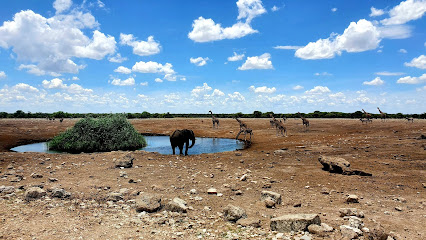
Namib-Naukluft National Park
Explore the breathtaking landscapes, diverse ecosystems, and unique wildlife of Namib-Naukluft National Park, a true gem of Namibia's natural beauty.
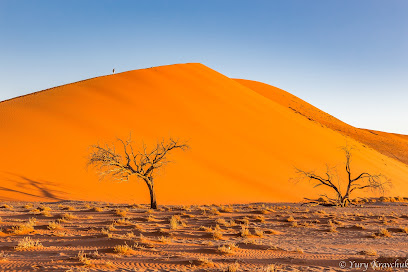
Cape Cross Seal Reserve
Discover Cape Cross Seal Reserve: Experience playful seals, stunning coastal views, and rich biodiversity in Namibia's nature preserve.
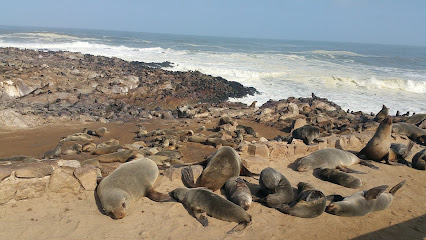
Swakopmund Museum
Explore Namibia's history and culture at Swakopmund Museum, showcasing artifacts, exhibits, and the unique coastal environment of Swakopmund.
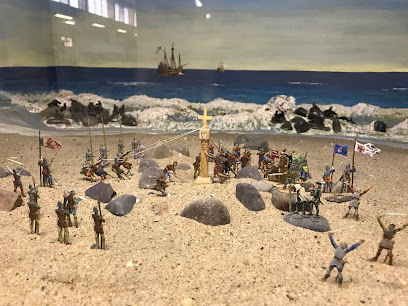
Okaukuejo Etosha
Discover Okaukuejo in Etosha National Park, a haven for wildlife lovers with its iconic waterhole and breathtaking safari experiences.
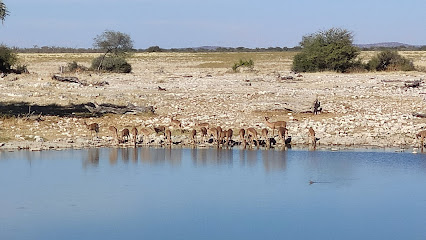
Dune 7
Discover the breathtaking beauty of Dune 7 in Walvis Bay, Namibia - a must-visit natural wonder with stunning views and thrilling adventures.
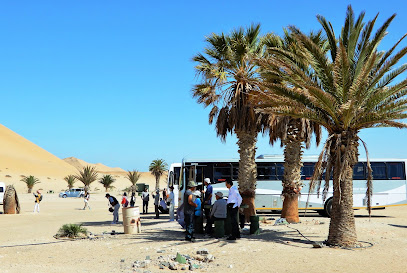
Windpomp 14
Discover Windpomp 14 in Swakopmund, Namibia: A scenic campground and restaurant offering unique coastal adventures and local culinary delights.
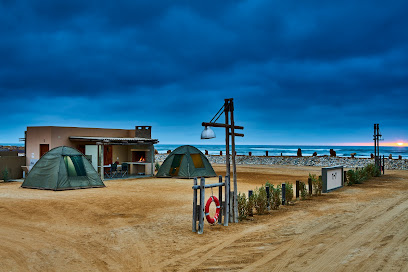
Swakopmund Mole
Explore the stunning Swakopmund Mole, a coastal gem in Namibia offering breathtaking views, sandy beaches, and vibrant local culture.
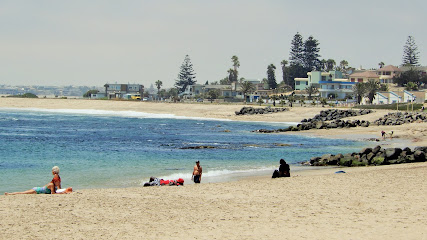
Sperrgebiet
Discover the untouched beauty of Sperrgebiet, Namibia's breathtaking campground, where adventure and nature await every traveler.

Okonjima Nature Reserve
Explore the captivating beauty and wildlife of Okonjima Nature Reserve, a premier nature lodge and conservation area in Namibia, perfect for nature enthusiasts.

Waterberg Plateau National Park
Experience the breathtaking beauty of Waterberg Plateau National Park, a sanctuary of diverse wildlife and stunning landscapes in Namibia.
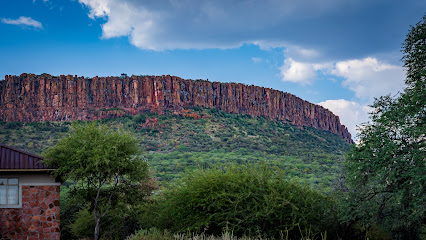
Dune 7 Adventures
Experience the thrill of adventure sports and the beauty of Namibia's Dune 7 at Dune 7 Adventures, your ultimate outdoor escape.
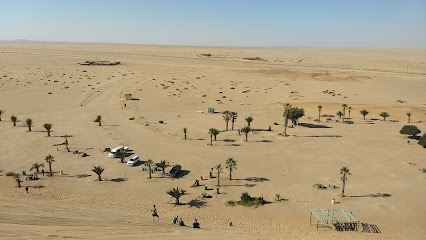
Epupa Falls
Experience the breathtaking beauty and cultural richness of Epupa Falls, a spectacular waterfall in Namibia surrounded by lush landscapes and rich heritage.
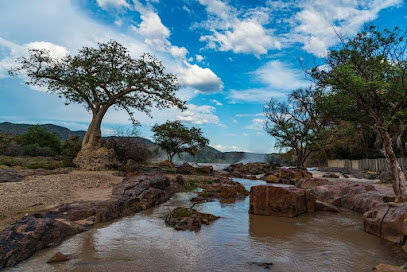
Ai Aiba - The Rock Painting Lodge
Experience the breathtaking landscapes and ancient rock art at Ai Aiba - The Rock Painting Lodge, a unique retreat in the heart of Namibia.
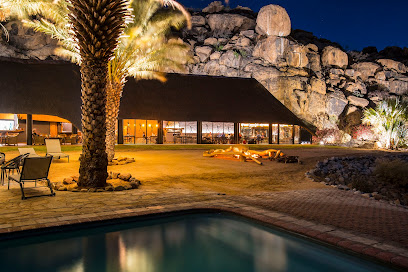
Etosha Pan Lookout
Experience the stunning vistas of the Etosha Pan Lookout, a serene destination in Namibia offering incredible wildlife sightings and breathtaking landscapes.
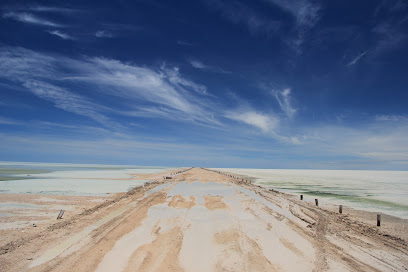
Unmissable attractions to see
Cape Cross Seal Reserve
Discover the captivating Cape Cross Seal Reserve, home to thousands of playful seals and stunning coastal views in Namibia.
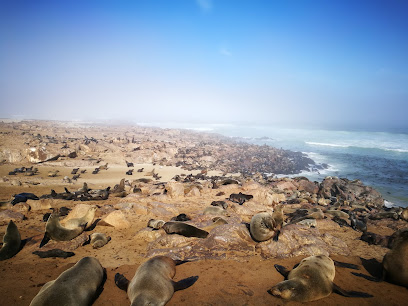
Epupa Falls
Experience the breathtaking beauty of Epupa Falls, a stunning natural wonder at the border of Namibia and Angola, surrounded by lush landscapes.
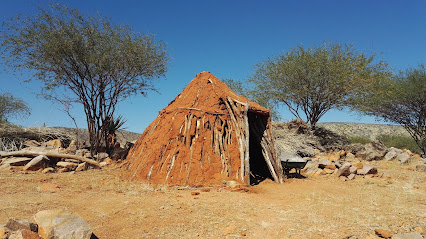
Dune 45 Viewpoint
Discover the mesmerizing beauty of Dune 45 Viewpoint, an iconic destination in Namibia's stunning Namib Desert, perfect for unforgettable sunrises and sunsets.
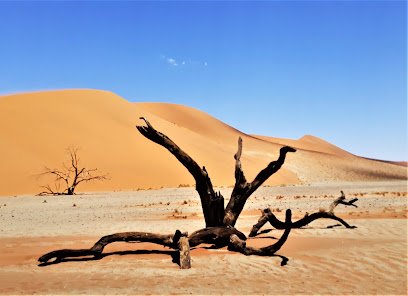
Organ Pipes
Explore the Organ Pipes in Namibia, a breathtaking natural wonder showcasing stunning basalt formations and rich wildlife, perfect for nature lovers and adventurers.
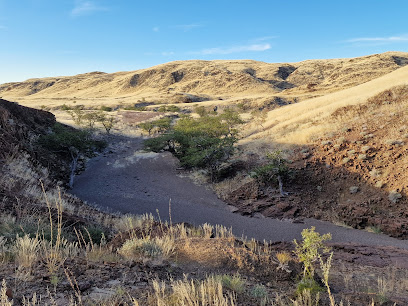
Popa Game Park
Explore the natural beauty and diverse wildlife of Popa Game Park in Namibia, a perfect destination for nature lovers and adventure seekers.
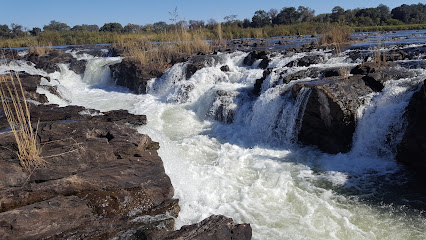
Twyfelfontein Elephant Drives & Campsite
Explore the wonders of Namibia at Twyfelfontein Elephant Drives & Campsite, where majestic elephants roam and nature unfolds.
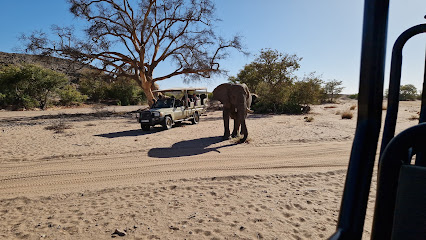
Brandberg White Lady Painting
Discover the ancient artistry of the Brandberg White Lady Painting, a breathtaking cultural treasure in Namibia's serene wilderness.

Wolwedans Desert Lodge
Discover the enchanting Wolwedans Desert Lodge, where luxury meets the breathtaking beauty of the Namib Desert for an unforgettable escape.

Shipwreck Lodge
Discover the captivating beauty of Shipwreck Lodge on the Skeleton Coast, where adventure meets serenity in Namibia's stunning landscapes.
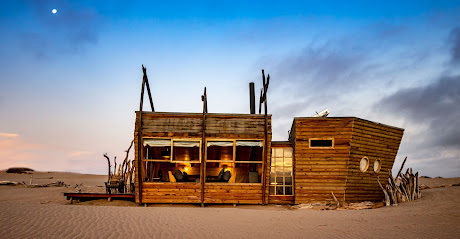
Pink Lake
Experience the stunning beauty and vibrant hues of Pink Lake, a must-see natural wonder in Namibia, perfect for relaxation and exploration.
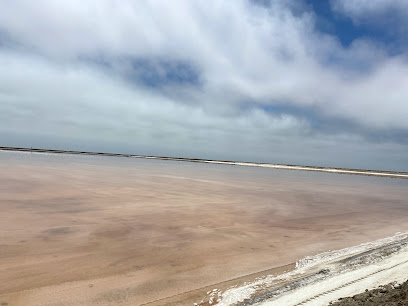
Sandwich Harbour
Experience the breathtaking landscapes and rich wildlife of Sandwich Harbour, a hidden national reserve along Namibia's stunning coastline.
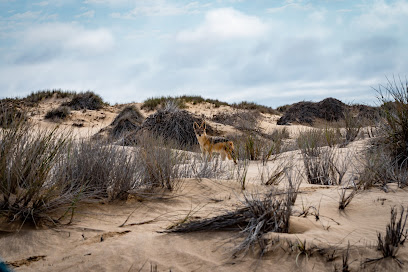
Big Mamma Dune
Discover the breathtaking beauty of Big Mamma Dune, a towering sand dune in Sossusvlei, Namibia, ideal for photography and adventure.
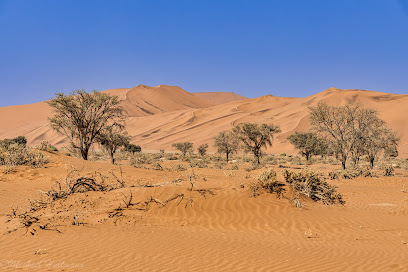
Cape Cross Gate
Discover the breathtaking beauty of Cape Cross Gate, home to a vibrant seal colony and rich historical significance along Namibia's stunning coastline.
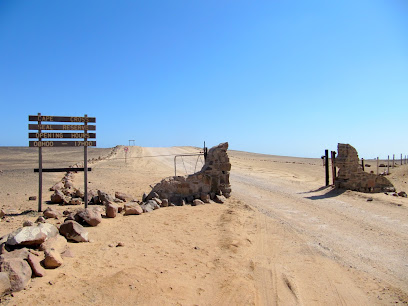
Tsau Khaeb National Park
Explore the breathtaking landscapes and rich biodiversity of Tsau Khaeb National Park, a hidden gem near Luderitz, Namibia, perfect for nature lovers and adventurers.
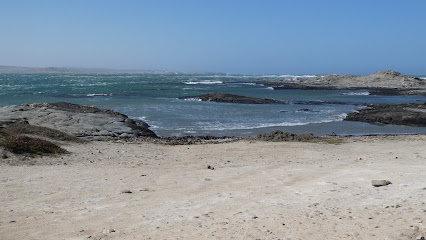
Bird Island
Experience the enchanting beauty of Bird Island, Namibia, a premier destination for birdwatching amidst stunning coastal scenery.

Essential places to dine
Joe's Beerhouse
Discover the flavors of Namibia at Joe's Beerhouse – a vibrant restaurant and bar offering local cuisine in Windhoek.
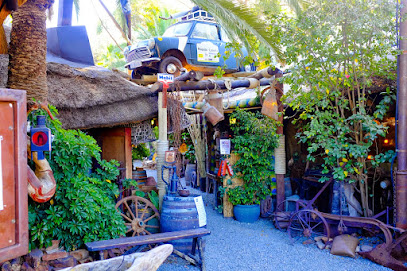
The Tug Restaurant
Experience exquisite seafood and breathtaking ocean views at The Tug Restaurant in Swakopmund – where every meal is a celebration of local flavors.
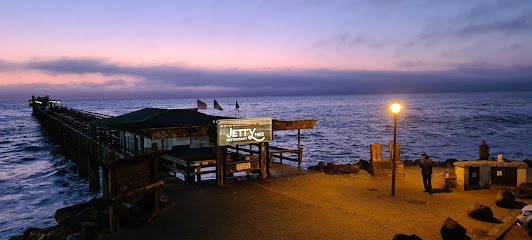
The Stellenbosch Wine Bar and Bistro
Discover exquisite wines and delectable cuisine at The Stellenbosch Wine Bar and Bistro, where every meal tells a story of flavor.
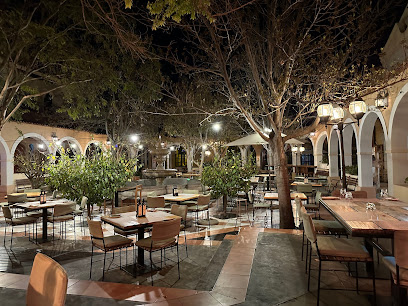
Anchors Waterfront Restaurant
Experience exquisite seafood and Portuguese delights at Anchors Waterfront Restaurant in scenic Walvis Bay.

Swakopmund Brauhaus
Experience authentic German cuisine at Swakopmund Brauhaus in Namibia—where hearty meals meet refreshing brews in a cozy setting.

Village Cafe
Experience the charm of Village Cafe in Swakopmund - where quality meets comfort in every cup.
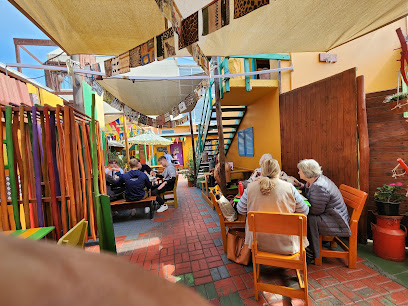
Jetty 1905 Restaurant
Discover exquisite seafood dining at Jetty 1905 Restaurant on Swakopmund's scenic Jetty Bridge, blending stunning views with culinary excellence.
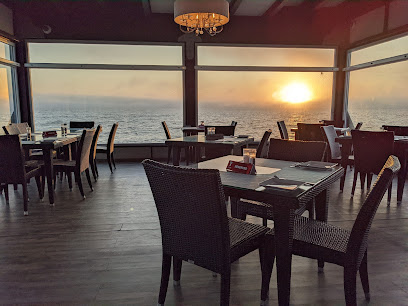
The Raft Restaurant
Experience exquisite dining at The Raft Restaurant on Walvis Bay's Skeleton Coast with breathtaking ocean views and delicious local cuisine.
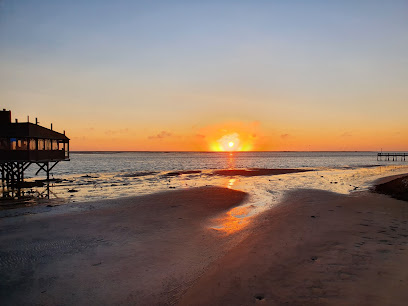
Fork 'n Nice
Experience the best of Namibian cuisine at Fork 'n Nice, where fresh local ingredients meet a warm and inviting atmosphere.
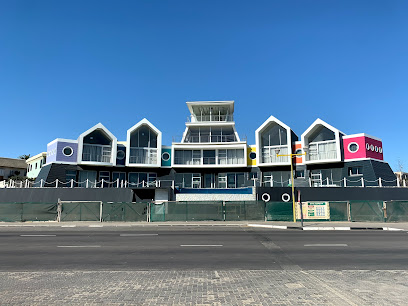
BlueGrass
Savor exquisite flavors at BlueGrass in Swakopmund—where delightful cuisine meets warm hospitality.
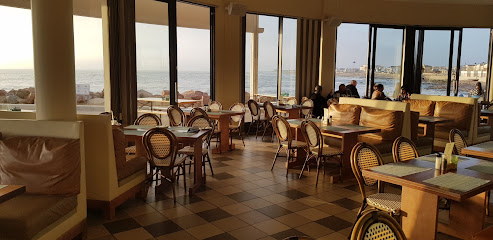
Kücki's Pub
Experience the vibrant atmosphere at Kücki's Pub in Swakopmund - your destination for delicious food and refreshing drinks.
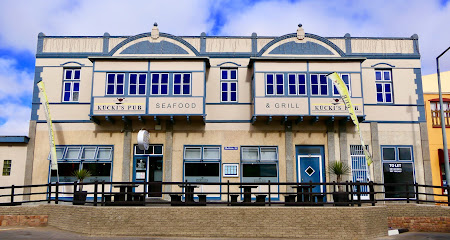
Col'Cacchio The Grove
Experience authentic Italian cuisine at Col'Cacchio The Grove with artisanal pizzas and homemade pastas in Windhoek's vibrant shopping hub.
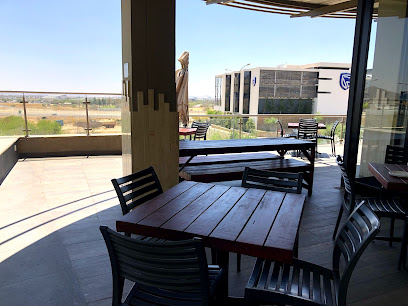
Sardinia Blue Olive Restaurant
Experience authentic Italian cuisine at Sardinia Blue Olive Restaurant in Windhoek – where every meal is a delightful culinary adventure.
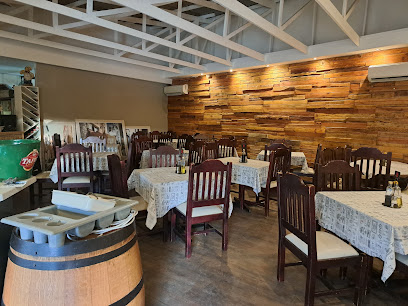
Schnitzel King
Discover authentic German flavors at Schnitzel King in Windhoek's Pioneers Park – where every bite tells a delicious story.
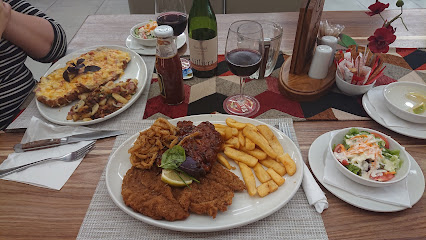
Essenzeit
Experience culinary excellence at Essenzeit in Luderitz - where local flavors meet modern dining.
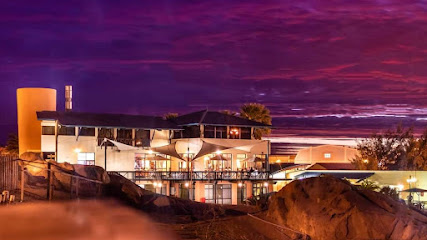
Markets, malls and hidden boutiques
Maerua Mall
Discover the ultimate shopping and entertainment experience at Maerua Mall, Windhoek's leading destination for tourists and locals alike.

Auas Valley Shopping Mall
Discover a diverse shopping experience at Auas Valley Shopping Mall in Windhoek, offering retail, dining, and entertainment all in one place.
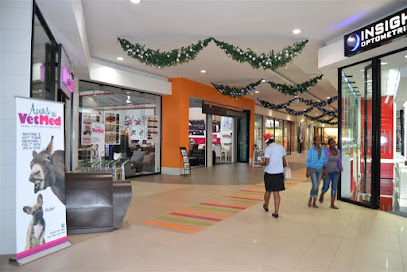
Cape Cross Seal Reserve
Experience the natural beauty and vibrant wildlife of Cape Cross Seal Reserve, home to thousands of Cape fur seals and breathtaking coastal views.
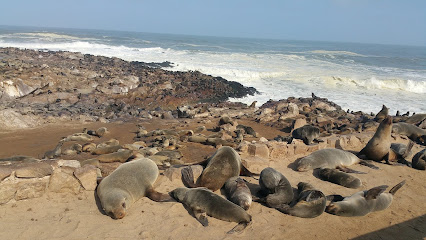
Kristall Galerie
Explore the enchanting world of gemstones at Kristall Galerie, a captivating museum showcasing Namibia's stunning geological treasures.
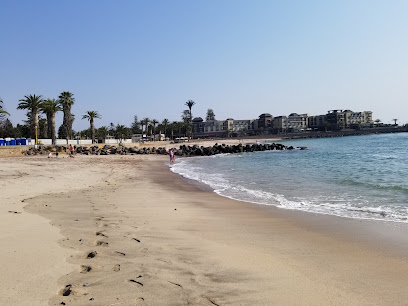
Namibia Craft Centre
Experience the vibrant artistry of Namibia at the Namibia Craft Centre, your gateway to unique crafts and local culture in Windhoek.
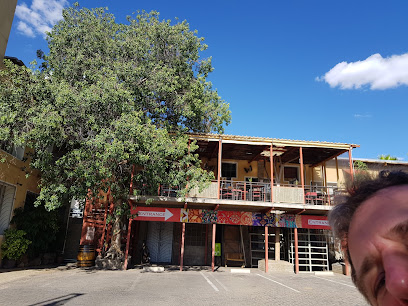
Okahandja Mbangura Woodcarvers Craft Market
Discover the rich artistry and craftsmanship at Okahandja Mbangura Woodcarvers Market, a cultural gem for every traveler in Namibia.
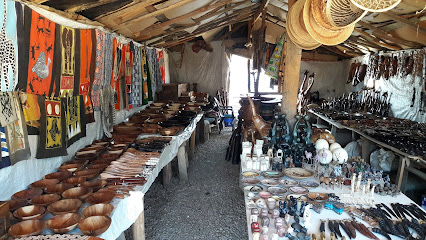
Skeleton Coast National Park
Explore the rugged beauty of Skeleton Coast National Park, where the desert meets the Atlantic, offering breathtaking landscapes and unique wildlife experiences.
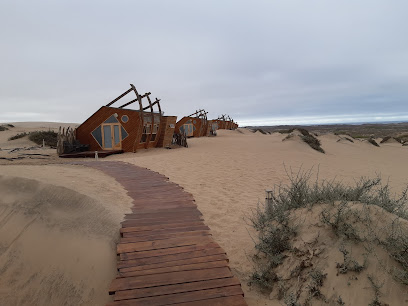
Leon`s Tackle Shop
Discover top-quality fishing gear and expert advice at Leon's Tackle Shop, your ultimate fishing destination in Swakopmund, Namibia.
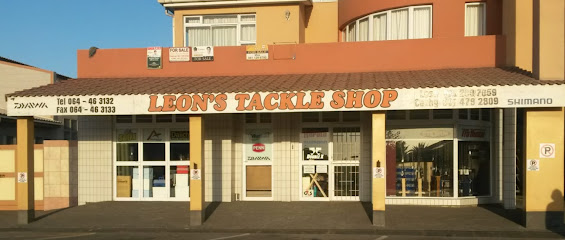
Dolls Paradise and Gift Shop
Explore a whimsical world of dolls and unique gifts at Dolls Paradise and Gift Shop in Windhoek, a must-visit for every collector and enthusiast.
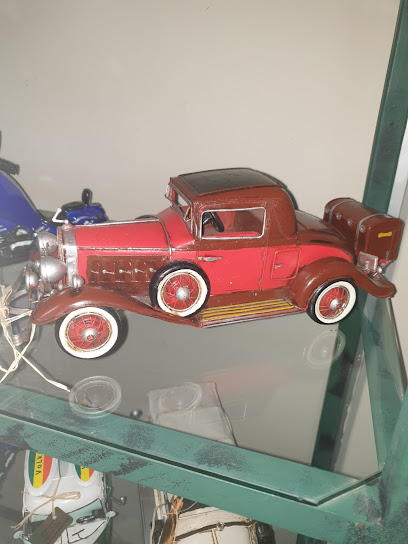
Shipwreck Lodge
Experience the breathtaking beauty and unique architecture of Shipwreck Lodge on Namibia's Skeleton Coast, where adventure meets luxury.
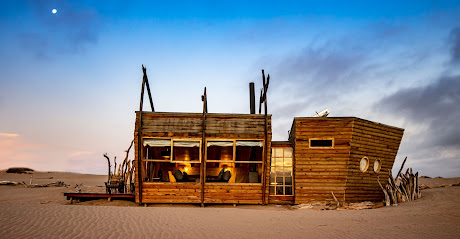
Eco-Gliding Tours
Discover the breathtaking landscapes of Namibia from above with Eco-Gliding Tours, an unforgettable aerial adventure in Swakopmund.
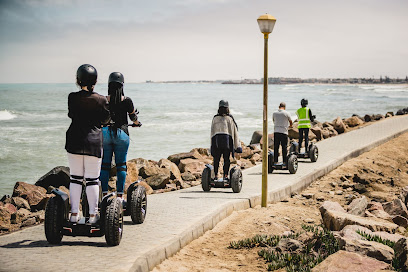
Peter's Antiques
Explore a treasure trove of unique antiques and local artifacts at Peter's Antiques in Swakopmund, a true gem for culture and history enthusiasts.
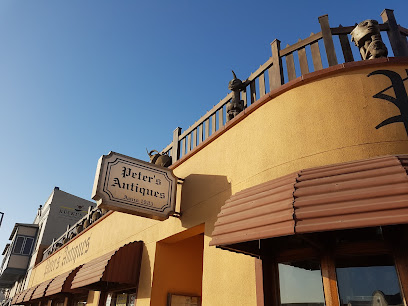
Karakulia Weavers
Experience the rich heritage of Namibian weaving at Karakulia Weavers in Swakopmund, where art meets tradition in beautifully crafted textiles.
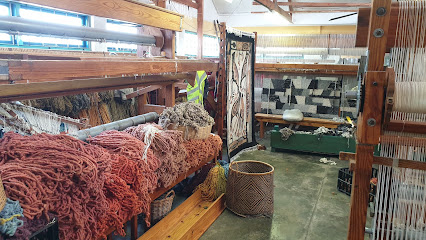
Hoanib Skeleton Coast Camp
Experience the wild beauty of Namibia at Hoanib Skeleton Coast Camp, a luxurious lodge in the heart of the Skeleton Coast's breathtaking landscapes.

Carl List Mall
Experience the vibrant heart of Windhoek at Carl List Mall, where shopping meets culture in a lively atmosphere.
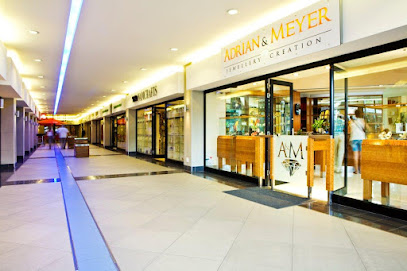
Essential bars & hidden hideouts
Joe's Beerhouse
Discover the heart of Namibian culture at Joe's Beerhouse, where traditional flavors meet a lively atmosphere in the heart of Windhoek.
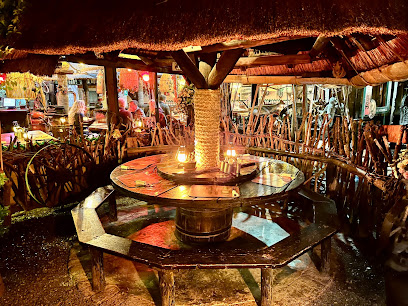
The Tug Restaurant
Experience the best of coastal dining at The Tug Restaurant in Swakopmund, where fresh seafood meets breathtaking ocean views.
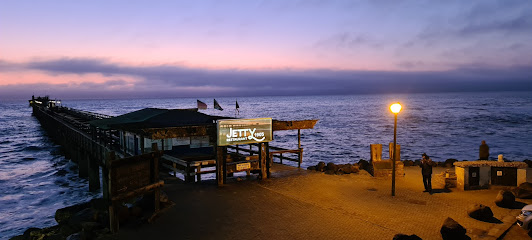
The Stellenbosch Wine Bar and Bistro
Discover the flavors of Namibia at The Stellenbosch Wine Bar and Bistro in Windhoek, where culinary excellence meets an extensive wine selection.
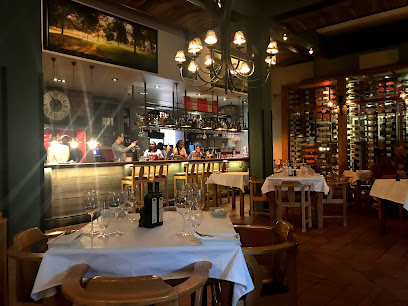
Anchors Waterfront Restaurant
Discover Anchors Waterfront Restaurant in Walvis Bay, where fresh seafood meets Portuguese flavors against a scenic ocean backdrop.
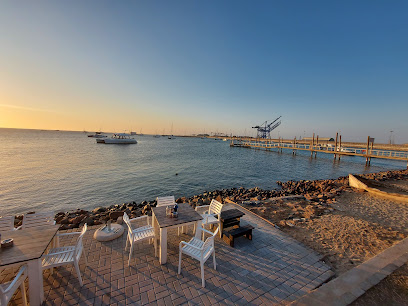
Jetty 1905 Restaurant
Discover the culinary delights of Jetty 1905 Restaurant, where fresh seafood meets stunning ocean views in Swakopmund, Namibia.
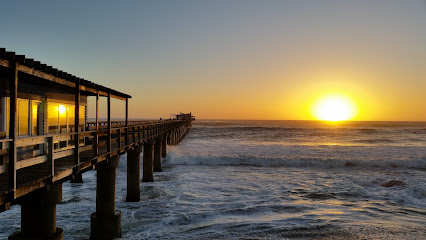
The Raft Restaurant
Experience the tranquility of Walvis Bay at The Raft Restaurant, where fresh seafood meets stunning ocean views for an unforgettable dining experience.
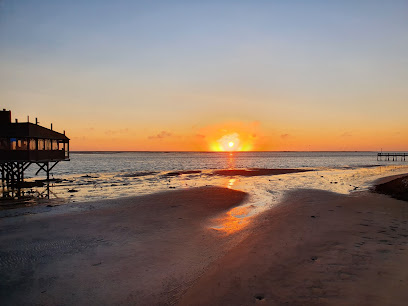
Brewer & Butcher
Discover the vibrant flavors of Namibian cuisine at Brewer & Butcher, a pub that blends local traditions with a welcoming atmosphere.
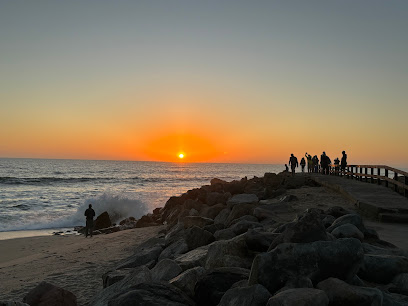
Andy's Pub & Restaurant
Discover the essence of Windhoek at Andy's Pub & Restaurant, where local flavors and a vibrant atmosphere come together.
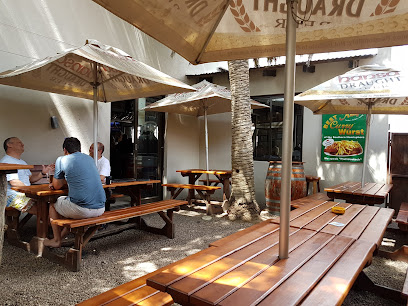
Tiger Reef Beach Bar & Grill
Discover the delightful culinary offerings at Tiger Reef Beach Bar & Grill, where ocean views meet a vibrant dining experience in Swakopmund, Namibia.

Kücki's Pub
Experience the vibrant ambiance and delicious local cuisine at Kücki's Pub in Swakopmund, the perfect spot for travelers to unwind and connect.
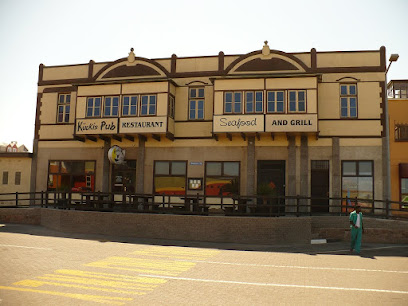
Rojo Pub and Restaurant at The Walvis Bay Yacht Club
Experience the vibrant atmosphere and local flavors at Rojo Pub and Restaurant, where the beauty of Walvis Bay meets delicious cuisine.
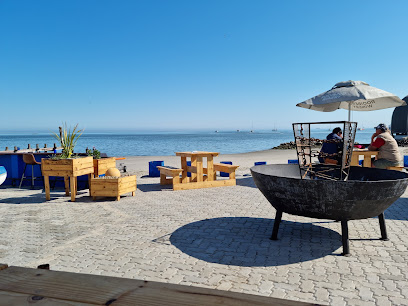
Goodfellas Pizza and Pub
Experience the vibrant flavors of Goodfellas Pizza and Pub in Windhoek, where delicious pizzas meet a lively atmosphere perfect for any occasion.
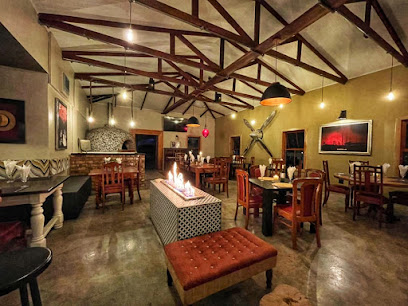
The Wine Bar
Discover the finest selection of local and international wines in the heart of Windhoek at The Wine Bar, where flavor meets culture.
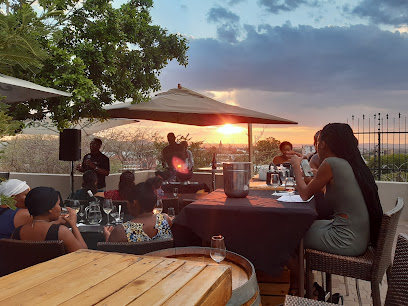
The Wolfshack
Experience the lively atmosphere and local flavors at The Wolfshack, Windhoek's premier bar and pub for tourists and locals alike.

Bar Zonder Naam
Discover the charming Bar Zonder Naam in Swakopmund, where exquisite wines meet breathtaking coastal views for an unforgettable experience.
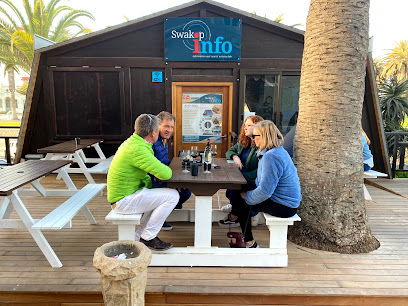
Local Phrases about Skeleton Coast
-
- HelloMoro
[mo-roh] - GoodbyeTotsiens
[toht-see-ens] - YesJa
[yah] - NoNee
[nee] - Please/You're welcomeAsseblief
[as-uh-bleef] - Thank youDankie
[dahn-kee] - Excuse me/SorryJammer
[yahm-mer] - How are you?Hoe gaan dit met jou?
[who gaahn dit met yoh] - Fine. And you?Goed. En jy?
[khoot. en yay] - Do you speak English?Praat jy Engels?
[praht yay eng-uhls] - I don't understandEk verstaan nie
[ek ver-shtaahn nee]
- HelloMoro
-
- I'd like to see the menu, pleaseEk wil graag die spyskaart sien, asseblief
[ek vil khraahg dee speis-kahrt seen, as-uh-bleef] - I don't eat meatEk eet nie vleis nie
[ek ayt nee flace nee] - Cheers!Gesondheid!
[guh-sohnt-hate] - I would like to pay, pleaseEk wil asseblief betaal
[ek vil as-uh-bleef buh-tahl]
- I'd like to see the menu, pleaseEk wil graag die spyskaart sien, asseblief
-
- Help!Help!
[help] - Go away!Gaan weg!
[kahn vehkh] - Call the Police!Bel die Polisie!
[bell dee poh-lee-see] - Call a doctor!Bel 'n dokter!
[bell un dok-tuhr] - I'm lostEk is verlore
[ek is fuh-lohr-uh] - I'm illEk is siek
[ek is seek]
- Help!Help!
-
- I'd like to buy...Ek wil...koop
[ek vil...kohp] - I'm just lookingEk kyk net
[ek kayk neht] - How much is it?Hoeveel kos dit?
[who-veel kohs dit] - That's too expensiveDit is te duur
[dit is teh duur] - Can you lower the price?Kan jy die prys verlaag?
[kahn yay dee prise fuh-rahkh]
- I'd like to buy...Ek wil...koop
-
- What time is it?Hoe laat is dit?
[who laht is dit] - It's one o'clockDit is een uur
[dit is ayn oor] - Half past (10)Half tien
[hahlf teen] - MorningOggend
[oh-ghent] - AfternoonMiddag
[mi-dahkh] - EveningAand
[ahnt] - YesterdayGister
[ghis-tehr] - TodayVandag
[fuhn-dahkh] - TomorrowMôre
[moh-ruh] - 1Een
[ayn] - 2Twee
[twee] - 3Drie
[dree] - 4Vier
[feer] - 5Vyf
[fayf] - 6Ses
[sehs] - 7Sewe
[seh-weh] - 8Agt
[ahgt] - 9Nege
[neh-guh] - 10Tien
[teen]
- What time is it?Hoe laat is dit?
-
- Where's a/the...?Waar is die...?
[vahr is dee] - What's the address?Wat is die adres?
[vaht is dee uh-drehs] - Can you show me (on the map)?Kan jy my wys (op die kaart)?
[kahn yay may vays (ohp dee kahrt)] - When's the next (bus)?Wanneer is die volgende (bus)?
[vahn-ehr is dee fuhl-guhn-duh (buhs)] - A ticket (to ....) 'n Kaartjie (na ....)
[un kahrt-yuh (nah)]
- Where's a/the...?Waar is die...?
History of Skeleton Coast
-
The Skeleton Coast derives its name from the myriad shipwrecks that line its shores. Over centuries, dense fog, strong winds, and powerful currents have caused numerous vessels to meet their demise here. The name also alludes to the bones of whales and seals that once littered the beaches, remnants of the whaling industry.
-
In the late 15th century, Portuguese navigators were among the first Europeans to map the coast. Explorers like Diogo Cão and Bartolomeu Dias ventured along these treacherous waters. The inhospitable environment and fearsome reputation of the coast led them to name it 'The Gates of Hell.'
-
One of the most famous shipwrecks on the Skeleton Coast is that of the Dunedin Star, which ran aground in 1942. The rescue operation for the crew and passengers became a dramatic saga involving multiple rescue attempts by sea, land, and air. The remnants of the ship can still be seen today, serving as a grim reminder of the dangers of these waters.
-
The indigenous Himba and San peoples have lived in the harsh environment of the Skeleton Coast for centuries. The Himba are known for their distinctive red ochre body paint and intricate hairstyles, while the San are famed for their ancient rock art and hunter-gatherer lifestyle. Both cultures have adapted ingeniously to the arid conditions.
-
From 1884 to 1915, Namibia was a German colony known as German South-West Africa. During this period, the Skeleton Coast saw the establishment of various outposts and diamond mining operations. The remnants of German colonial architecture and abandoned mining equipment can still be found scattered across the desert.
-
In the mid-20th century, the Namibian government, along with international conservationists, began efforts to preserve the unique ecosystem of the Skeleton Coast. The Skeleton Coast National Park was established in 1971 to protect the area's flora and fauna, including the rare desert-adapted elephants and lions.
-
Even in modern times, the Skeleton Coast continues to claim ships. The Eduard Bohlen, a German cargo ship that ran aground in 1909, now lies inland due to shifting sands and is a popular site for adventurers. These wrecks have become tourist attractions, adding to the eerie allure of the coast.
Skeleton Coast Essentials
-
The Skeleton Coast is located in the northwestern part of Namibia. The nearest international airport is Hosea Kutako International Airport in Windhoek. From Windhoek, you can take a domestic flight to Walvis Bay Airport, which is the closest airport to the Skeleton Coast. Alternatively, you can drive from Windhoek to the Skeleton Coast, which takes approximately 5 to 7 hours by road. Organized tours often start from Swakopmund, which is a 4-hour drive from Windhoek.
-
Given the remote nature of the Skeleton Coast, having a 4x4 vehicle is essential for navigating its rugged terrain. Car rentals are available in Windhoek and Walvis Bay. Guided tours are highly recommended for those unfamiliar with the area. Public transportation is limited, so self-driving or joining an organized tour are the best options. Ensure your vehicle is well-equipped for long-distance travel and off-road conditions.
-
The official currency in Namibia is the Namibian Dollar (NAD), which is pegged to the South African Rand (ZAR). Credit cards are accepted in major towns like Swakopmund and Walvis Bay but may not be accepted in more remote areas. It's advisable to carry enough cash for your journey. ATMs are available in the larger towns, but it's best to withdraw sufficient funds before heading to the Skeleton Coast.
-
The Skeleton Coast is generally safe for tourists, but its remote nature requires extra precautions. Always inform someone of your travel plans and expected return. Ensure your vehicle is in good condition and carry extra fuel, water, and supplies. While crime rates are low, avoid leaving valuables in plain sight in your vehicle. Stick to well-known routes and avoid traveling alone. There are no specific high-crime areas targeting tourists, but always stay vigilant.
-
In case of emergency, dial 112 for immediate assistance. The Skeleton Coast is remote, so emergency services might take time to reach you. It's essential to have a satellite phone or a reliable means of communication. Carry a well-stocked first aid kit and extra supplies. Travel insurance that covers medical emergencies and evacuation is highly recommended. For any health issues, the nearest medical facilities are in Swakopmund and Walvis Bay.
-
Fashion: Do wear light, breathable clothing and sturdy footwear. Bring layers for the cooler evenings. Avoid wearing flashy jewelry. Religion: Do respect local customs and traditions. Public Transport: Do use organized tours for safety and convenience, as public transport is limited. Greetings: Do greet people with a friendly handshake. Eating & Drinking: Do try local delicacies. Don't waste water, as it is a precious resource in this arid region.
-
To experience the Skeleton Coast like a local, consider visiting during the Namibian winter months (May to October) when the weather is cooler. Engage with local guides who can share in-depth knowledge about the area’s history, flora, and fauna. Visit the shipwrecks and learn about their stories. Don't miss the Cape Cross Seal Reserve to witness one of the largest seal colonies in the world. Respect the environment by leaving no trace and taking all your litter with you.
Trending Landmarks in Skeleton Coast
Nearby Cities to Skeleton Coast
-
Things To Do in Outjo
-
Things To Do in Omaruru
-
Things To Do in Swakopmund
-
Things To Do in Usakos
-
Things To Do in Karibib
-
Things To Do in Walvis Bay
-
Things To Do in Oshakati
-
Things To Do in Otjiwarongo
-
Things To Do in Ongwediva
-
Things To Do in Okahandja
-
Things To Do in Tsumeb
-
Things To Do in Windhoek
-
Things To Do in Mariental
-
Things To Do in Rundu
-
Things To Do in Lüderitz













